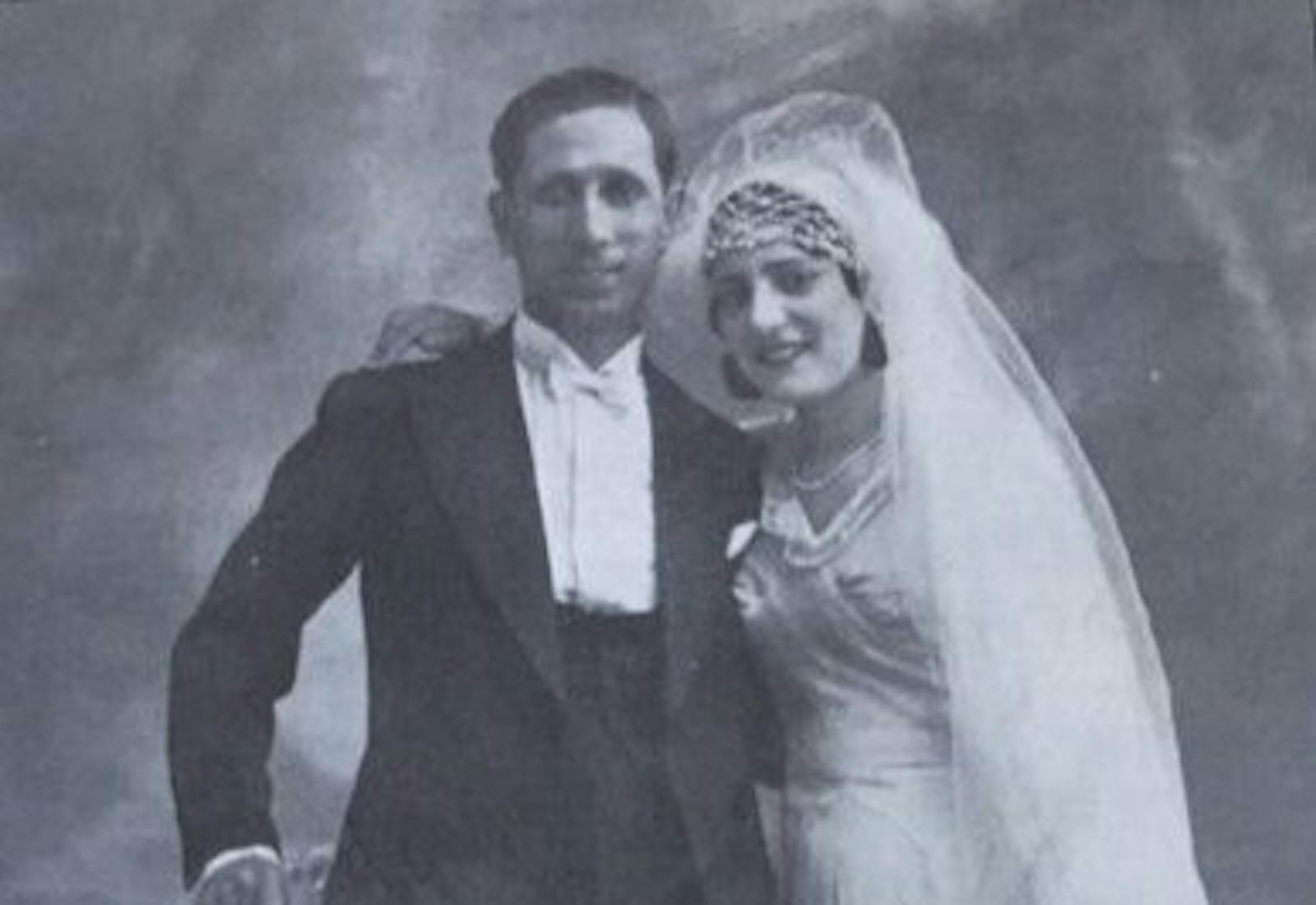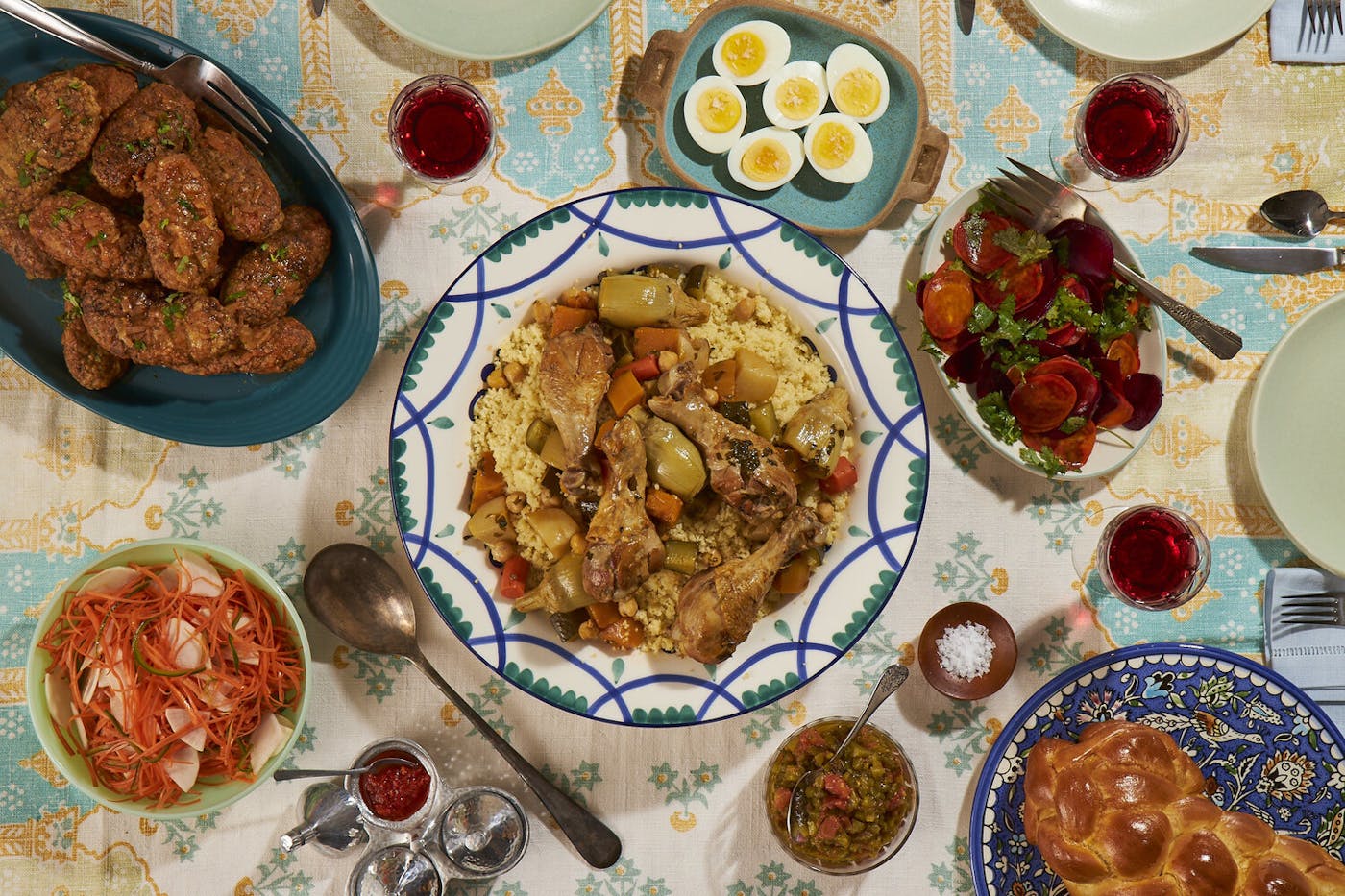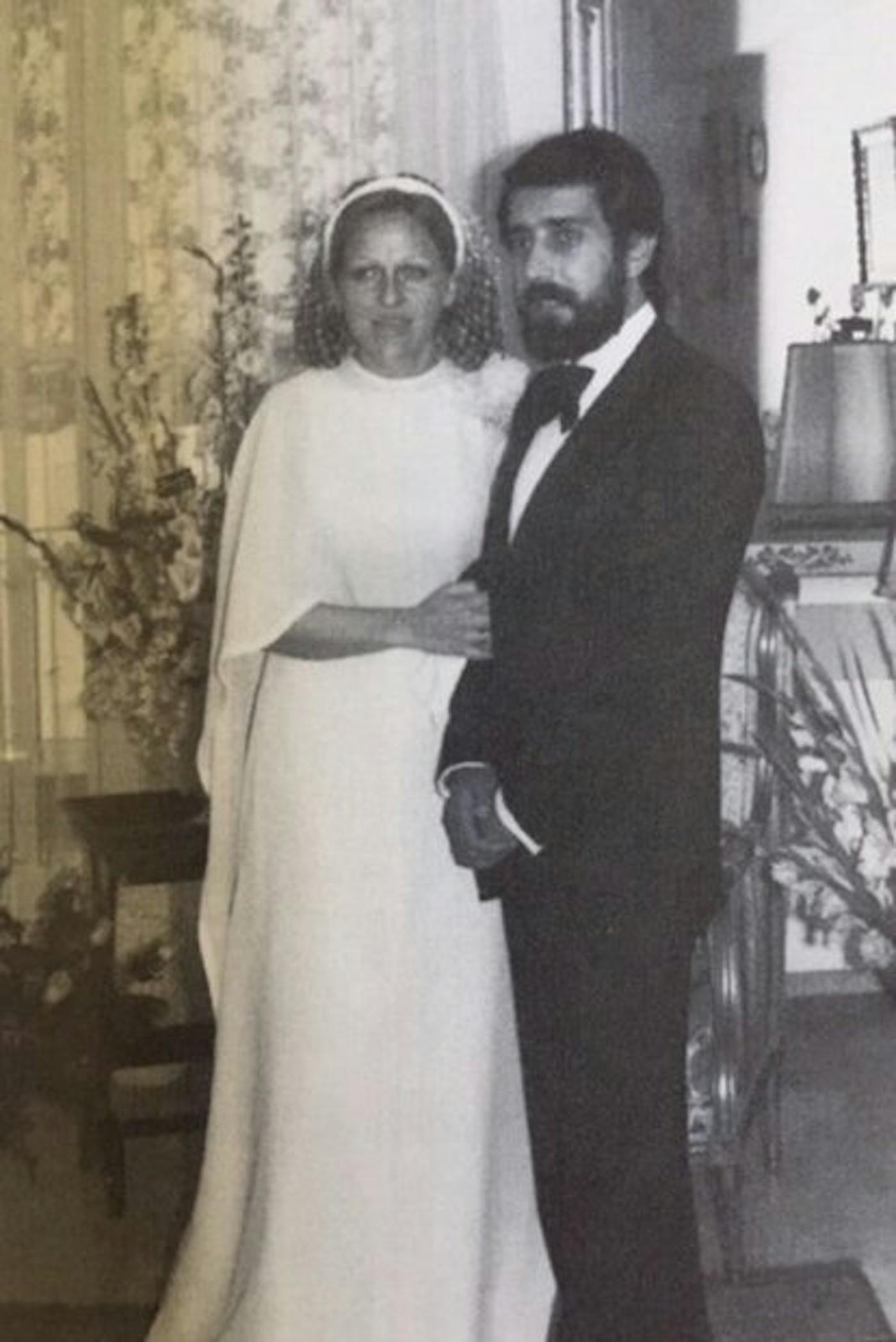Shared by Eva Zaghdoun


Friday nights during Eva Zaghdoun’s early childhood in Nice, a city along France’s Mediterranean coast, were bustling with family members in her grandparents’ one bedroom apartment. She and her three sisters, their parents, aunts, uncles and cousins, as many as 15 people would gather for Shabbat dinner. “It was always something that I remember,” Eva says. “Something that I miss in the U.S.”
Her grandmother Henriette — Miss Tunisia in 1933 and one of 14 children — called Mamif in the family, prepared a parade of Tunisian dishes. Meals started with Coca-Cola and pistachios, then salads like mseir made with carrots and turnips, another with beets and cilantro, and slata mechouia, a grilled tomato and pepper salad. The small salad bowls were followed by a rotating offering of main courses like white beans cooked with cumin and beef, or couscous with okra and tomato, or meatballs, chicken and vegetables. To finish the meal, there was often a simple but rich chocolate mousse layered with rum-infused cookies.
Henriette emigrated in 1970, following some of her children, including Eva’s father Gérard who moved to France in the summer of 1967, a time when a wave of Jews were leaving the country. In France, Tunisian recipes bound the family together. When Eva’s parents met, her mom Annemarie (whose family has German roots) quickly dove into the Tunisian kitchen, learning her mother-in-law’s recipes. “In the summer of 1974, my mum used to go to my grandparents’ house and watched my grandmother as she was cooking,” Eva explains.
Still, Henriette kept some details to herself, says Eva. “When she shared a recipe with my mum, she always ‘forgot’ to mention an ingredient or did not give the exact amount for something so my dad [would] always says ‘my mum’s food is better.’” Eva also recalls stories of her grandmother packing up food for her parents, but never enough for both of them. “Because [Mamif] wanted to make sure her son would always come back on shabbat,” Eva adds.
Almost 50 years later, it is Annemarie and her daughters who are carrying Henriette’s Tunisian recipes forward. “My mom was a nurse at night,” Eva says. “When she was not caring for the patients because they were sleeping...That’s when she decided to write down recipes.” The family cookbook she created includes recipes from her side of the family like a great aunt’s souffle as well as a collection of Henriette’s recipes.
Everytime Annemarie comes to visit Eva in Washington D.C. she makes the Tunisian recipes. And, when the family can’t be together for holidays, particularly Yom Kippur, Eva’s and all of her sisters (two in Paris, and one in Nice) make the couscous with meatballs to help them prepare for the fast. “All my sisters, we all eat the same thing,” Eva says.
Over the years, some of the family recipes, changed slightly. Eva and her dad, who passed away in 2015, made notes in their copies of the cookbook, modifying recipes to their taste. “My mom always gets upset [saying]: ‘You changed the recipe, this is not what I wrote,’” Eva explains laughing.
It’s not quite how Gérard saw things. Eva recalls: “He used to say ‘cooking is an art that never end[s].’”

